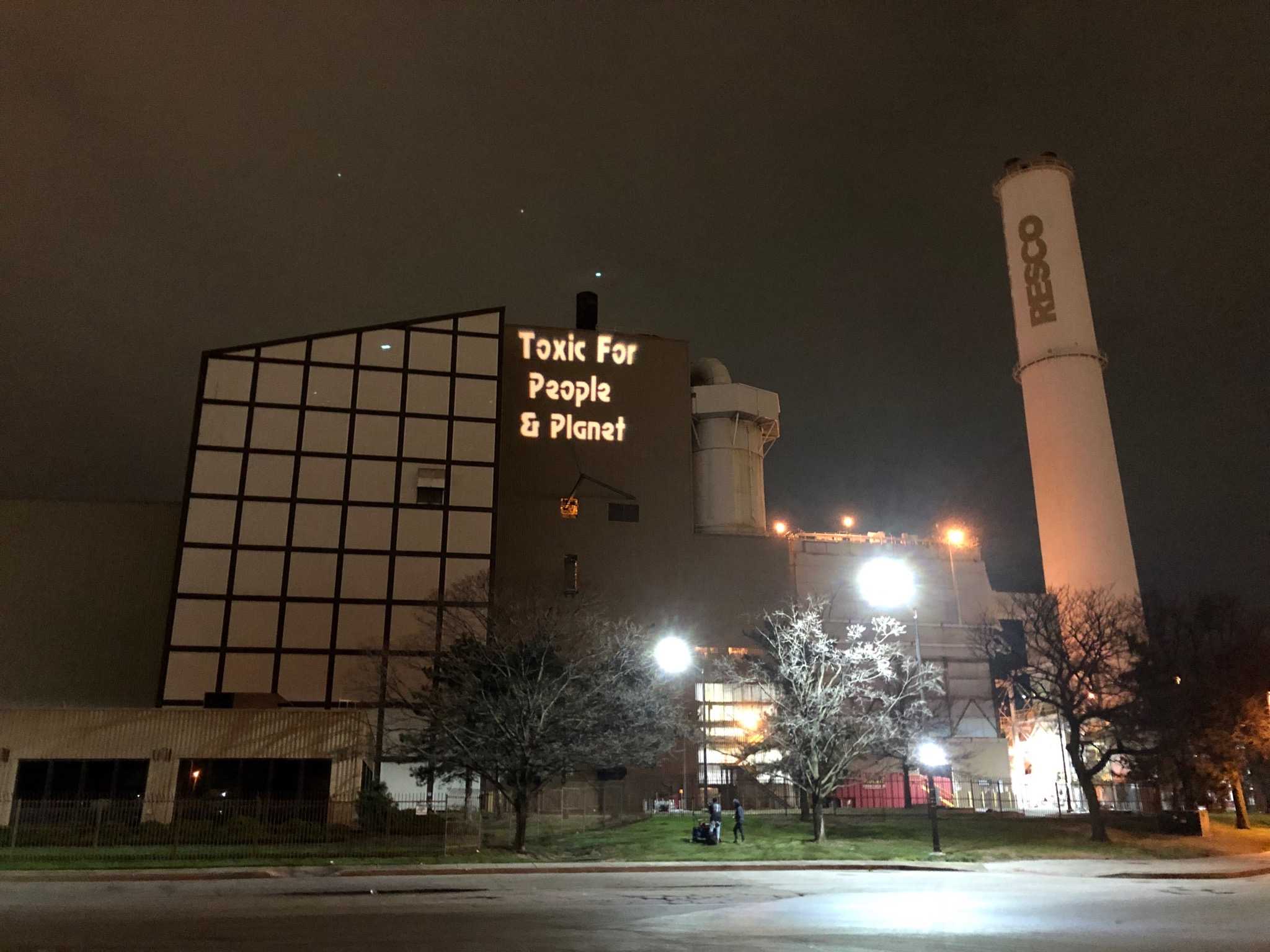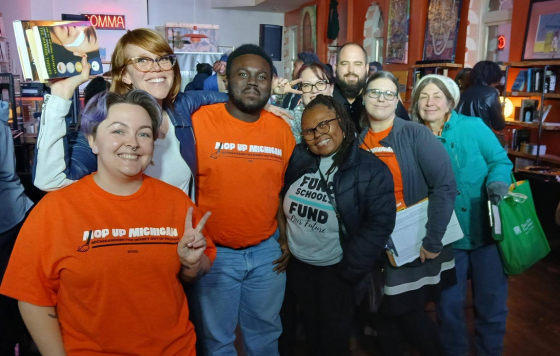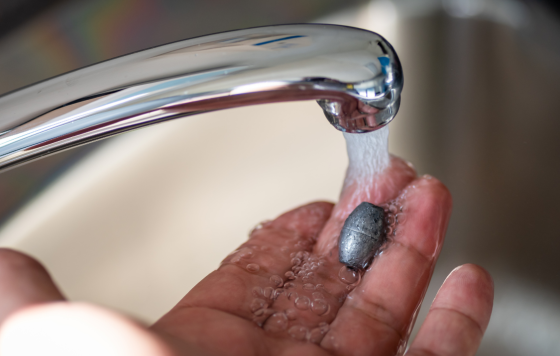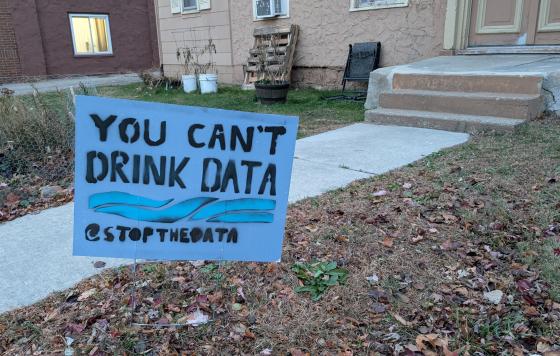
Today, the House Economic Matters Committee is holding a hearing on HB0332, legislation to reform Maryland's Renewable Portfolio Standard - a program intended when it was created in 2004 to promote new wind and solar development. Since then, polluting energy sources have successfully lobbied to add themselves to this subsidy program, and a new report by our allies at the Public Employees for Environmental Responsiblity shows that Maryland paid over $32 million to buy renewable energy credits from dirty energy sources in 2019 alone. For the past two years, we've been working to take trash incineration out of the RPS so that these renewable energy funds can go to support actual renewable energy development, not to profit aging incinerators. Click here to join and contact your representatives! Here is the testimony we submitted on behalf of 33 organizations.
HB0332: Renewable Energy Portfolio Standard - Eligible Sources
House Economic Matters Committee
February 4, 2020
Positon: Favorable
Dear Chairman Davis and Members of the Committee,
As 33 Maryland-based organizations working to support the health, environmental wellness, economic well being, and climate resiliency of Maryland communities, we urge you to vote yes on HB0332 and end the practice of subsidizing trash incineration as “renewable energy” under Maryland’s Renewable Portfolio Standard. Burning trash cannot be considered renewable energy, and Maryland ratepayers must no longer be required to subsidize facilities that pollute their communities. Transitioning to truly renewable energy and alternative methods of waste disposal will create more jobs in Maryland, and this is a transition that our communities are ready to make.
Trash Incineration Harms the Climate:
It Does Not Meet the Goals of the RPS Program
When incinerators burn trash, they emit more greenhouse gasses per unit of energy generated than even coal, the dirtiest of fossil fuels. In 2015, the Wheelabrator Baltimore incinerator emitted roughly double the amount of greenhouses gases per unit of energy produced, on average, by each of the 7 coal plants located in Maryland. The Dickerson trash incinerator in Montgomery County produces 500,000 tons of greenhouse gases that contribute to climate change. Trash incinerators burn a significant amount of plastic waste, which is ultimately a non-renewable resource made from fossil fuels; much of the thermal output and therefore electricity produced by incinerators therefore comes from fossil fuels. Climate change poses multiple threats to Maryland residents, including increased precipitation, more frequent and severe flooding, and rising summer temperatures that increase outdoor air pollution levels. The financial support that Maryland’s Renewable Portfolio Standard provides must be used to support the development of new renewable energy projects that will help Maryland face and fight climate change, not to prop up aging trash incinerators that themselves emit greenhouse gases.
Maryland’s Renewable Portfolio Standard (RPS) was enacted in 2004 to facilitate a gradual transition to renewable sources of energy. Because of its impact on public health and on climate change, trash incineration cannot be considered renewable energy. According to the Department of Legislative Services’ analysis of this legislation, 11% of Maryland’s Tier 1 RPS obligation was met with Renewable Energy Credits for “waste-to-energy” facilities in 2019 (there are no applicable “refuse-derived fuel” facilities, the other category of incineration this bill addresses.) If applied to other Tier 1 renewable energy sources instead of incineration, these credits would support new high-paying Maryland jobs, increase GDP due to construction of new Maryland-based renewable energy infrastructure, and reduce Maryland’s carbon emissions. When it was first created, the Renewable Portfolio Standard was designed to end subsidies for incinerators in 2019; we're overdue for RECs for trash incinerators to end, as Maryland’s actually-renewable energy infrastructure has grown.
Trash Incineration Harms our Health
Trash incineration contributes to the air pollution in Maryland that causes chronic illnesses among Maryland residents. To produce the same amount of energy, Maryland’s trash incinerators emit higher levels of mercury, lead, nitrogen oxides (NOx), carbon monoxide (CO), and carbon dioxide (CO2) than Maryland’s coal plants. The process of incinerating trash creates an especially dangerous set of compounds called dioxins, declared by the World Health Organization as a known human carcinogen; dioxins are also linked to diseases of the immune system, endocrine system, nervous system, and reproductive system. Air pollutants from waste incinerators have also shown to increase the risk of pre-term births, and lung and blood cancers.
The incinerators in Maryland that profit from Renewable Energy Credits harm the health of residents of communities they are located in. The BRESCO incinerator in Baltimore contributes to the area’s failure to meet federal ozone standards, contributing to cancer, heart disease, asthma and other health impacts that disproportionately affect Baltimore residents; according to an Environmental Integrity Project report, the average rate of asthma-related hospitalizations in Baltimore City is approximately twice the average rate of Maryland and three times the average rate of the United States. The Montgomery County Resource Recovery Facility in Dickerson produces approximately 740 tons of air pollutants and sends 180,000 tons of toxic ash to landfills in Virginia. In Baltimore, Montgomery County, and throughout the state of Maryland, trash incineration contributes to air pollution that harms residents’ health; those residents should not be required to subsidize this pollution through the Renewable Portfolio Standard, since trash incineration is not renewable energy.
Alternatives to Trash Incineration Create More Local Jobs
Truly clean, renewable energy creates jobs in Maryland. The State has more than 218 solar companies and over 5,400 solar jobs. The wind industry has brought more than $380 million in private investment into Maryland’s economy, to date. These jobs in clean renewable energy lead to good-paying careers within these industries and across related economic sectors. New clean energy development made possible by removing “waste-to-energy” incineration from the RPS, and therefore making credits available to other Tier 1 energy sources, will further support the development of these economic sectors in Maryland.
Likewise, other methods of waste management such as composting, recycling, and reusing materials create more local jobs than trash incineration. According to the Institute for Local Self-Reliance, per ton of waste processed in Maryland, composting already “employs two times more workers than landfilling, and four times more workers than incineration. On a per-capital-investment basis, for every $10 million invested, composting facilities in Maryland support twice as many jobs as landfills and 17 more jobs than incinerators.” A similar study projected that within three years of increased recycling rates, Baltimore could have 500 new direct jobs in this sector of the city’s economy; overall, recycling and composting yield five to ten times more jobs than trash incineration. For every 10,000 tons of materials that are managed through reuse programs, 75 to 250 jobs are created. If investments were focused on more environmentally-friendly methods of waste disposal, more jobs would be created in Maryland.
Trash is Not a Renewable Resource:
Maryland Communities are Moving to Reduce Waste
While trash may seem infinite, it is not a renewable resource, and much of what municipal solid waste get burned in the incinerators is petroleum-based plastic. Contracts with trash incinerators disincentivize local investment in waste-reduction strategies, like composting, recycling, or phasing out single-use products, because the incinerators need a consistent level of waste to return investment. Many incinerators use “put or pay” contracts, which hold jurisdictions accountable for feeding the incinerators, and more sustainable waste-reduction strategies threaten the supply of trash. This proposed contract provision is a significant reason why Frederick and Carroll counties rejected the proposed incinerator.
Renewable Portfolio Standard subsidies to trash incinerators are not necessary to process Maryland’s trash: both because Maryland’s existing incinerators have and can operate without RPS subsidies, and because Maryland is moving to reduce the amount of waste it produces. Trash incineration was added to Tier 1 of the RPS in 2011, decades after Maryland’s two incinerators were built. Before 2011, it had been classified as a Tier 2 source, receiving lower subsidies that were to be phased out by 2019. Since 2011, trash incinerator companies have enjoyed almost a decade of Tier 1 eligibility and higher subsidies at the expense of Maryland ratepayers, subsidies that will continue in perpetuity without legislative action. But this does not need to be a permanent fixture of Maryland’s energy market. These renewable energy credits are intended to support clean, renewable energy, but when Maryland ratepayers’ money goes toward Renewable Energy Credits to trash incinerator companies, they do not receive actually clean, renewable energy in return. Taking trash incineration out of tier one is not a bait and switch, merely no longer paying these facilities for a product they do not provide.
Removing trash incineration from Tier 1 of the Renewable Portfolio Standard does not necessarily force Maryland’s trash incinerators to close, but allowing trash incineration to keep receiving subsidies as renewable energy is in direct opposition to grassroots efforts to move away from trash incineration and toward zero waste overall. As the only municipalities in Maryland that contain trash incinerators, Baltimore City and Montgomery County are working actively to increase recycling and composting rates and transition away from trash incineration. Both Baltimore City Mayor Scott and Montgomery County Executive Mark Elrich have pledged to work to close the incinerators in their respective jurisdictions, and both communities have active movements of residents acting to reduce the amount of waste going to landfills and incinerators, and enact zero waste solutions like composting, increased reuse and recycling, and reducing single-use products. Baltimore’s 2019 Sustainability Plan includes the goal of diverting 90% of the city’s waste from incinerators and landfills, and this is an achievable goal. According to the Baltimore Office of Sustainability’s 2014 report, “Waste to Wealth: Baltimore Waste Stream Analysis,” 82% of Baltimore’s household materials could be recycled or composted. Likewise, Montgomery County has a goal of increasing its waste diversion rate - already very high - to 70%, and moved toward this goal by passing legislation to eliminate plastics they cannot recycle last year.
Other Maryland communities are actively pursuing robust composting, recycling, and repurposing programs with the goal of reducing waste. Frederick and Carroll Counties, since rejecting the construction of a new incinerator in 2014, have made significant strides toward zero waste. In Carroll County, New Windsor piloted a “pay as you throw” program that resulted in a 44% decrease in solid waste thrown away. When it decided not to build its new incinerator, Frederick County created a “What’s Next” Steering Committee to investigate alternatives to the rejected trash incinerator. In the words of one committee member, “the legislative, budgetary, and regulatory gears are moving Frederick County toward pilot programs and public education, and ultimately to a robust diversion of organics from landfilling, with the added tremendous benefits of producing compost from the organics to amend our soil on farms and elsewhere.” Prince George’s County hosts the East Coast’s largest composting facility and boasts the highest waste diversion rate in the state. In addition, several pieces of legislation proposed for this legislative session will, once passed, help the state reduce its waste stream without relying on incinerators: for example, HB264, to divert organic waste from landfills and incinerators into compost, donation, and other beneficial uses; HB0084, to reduce the waste of electronic and other equipment by giving consumers the Right to Repair their devices; and HB0036, to reduce wasted packaging, containers, and paper products by enacting Extended Producer Responsiblity policies.
Communities across Maryland are working actively to develop the recycling, composting, reuse, and reduction programs to reduce the amount of waste being sent to both landfills and incinerators. Trash is not a renewable resource, and it can be better managed without trash incineration.
Conclusion
All Marylanders have the right to breathe clean air and no one should suffer health and environmental challenges because of where they live. The state should not subsidize incineration as clean and renewable energy, making it more profitable to pollute our communities and environment. We strongly urge the passage of this legislation to stop the practice of paying trash incinerators to for clean energy as they pollute our communities and environment.
Sincerely,
Clean Water Action
Emily Ranson
Maryland Director
Sugarloaf Citizens' Association
Lauren Greenberger
President
Maryland Legislative Coalition
Climate Justice Wing
Diana Younts
Co-Chair
Echotopia LLC
Diane Wittner
Founder and Owner
Our Revolution Maryland
Suchitra Balachandran
Member, State Organizing Committee
Howard County Climate Action
Ruth White
Steering Committee member and Advocacy Lead
Institute for Local Self-Reliance
Neil Seldman
Director, Waste to Wealth Initiative
Brenda Platt
Director, Composting for Community
Greenbelt Climate Action Network
Lore Rosenthal
Program Coordinator
Sunrise Movement Baltimore
Anne Wilson
Hub Coordinator
Montgomery County Food Council
Catherine Nardi
Programs Manager
Environmental Justice Ministry
Cedar Lane Unitarian Universalist Church
Nanci Wilkinson
Chair
Maryland PIRG
Emily Scarr
Director
Progressive Maryland
Malcolm Heflin
Lead Organizer
MOM's Organic Market
Alexandra DySard
Environmental Manager
Safe Skies Maryland
Mark Southerland, PhD
Legislative Director
Baltimore Community ToolBank
Noah Smock
Executive Director
Chesapeake Climate Action Network
Jamie DeMarco
Federal and Maryland Policy Director
Maryland Legislative Coalition
Cecilia Plante
Co-Chair
Unitarian Universalist Legislative Ministry of Maryland
Phil Webster
Chair, Climate Change Task Force
Preservation Maryland
Elly Cowan
Director of Advocacy
Maryland Conservation Council
Paulette Hammond
President
Waterkeepers Chesapeake
Betsy Nicholas
Executive Director
Nuclear Information and Resource Service
Timothy Judson
Executive Director
WISE
Monica O'Connor
Legislative Liaison
Food & Water Watch
Jorge Aguilar
Southern Region Director
Trash Free Maryland
Shane Robinson
Executive Director
Central Maryland Beekeepers Association
Bonnie Raindrop
Legislative Chair
Friends of the Earth
Marion Edey
Honorary Board member
Takoma Park Mobilization Environment Committee
Diana Younts
Co-Facilitator
Chesapeake Bay Foundation
Carmera Thomas
Baltimore Program Manager
MD Campaign for Environmental Human Rights
Nina Beth Cardin
Director
ShoreRivers
Elle Bassett
Miles-Wye Riverkeeper
Blue Water Baltimore
Jenn Aiosa
Executive Director


